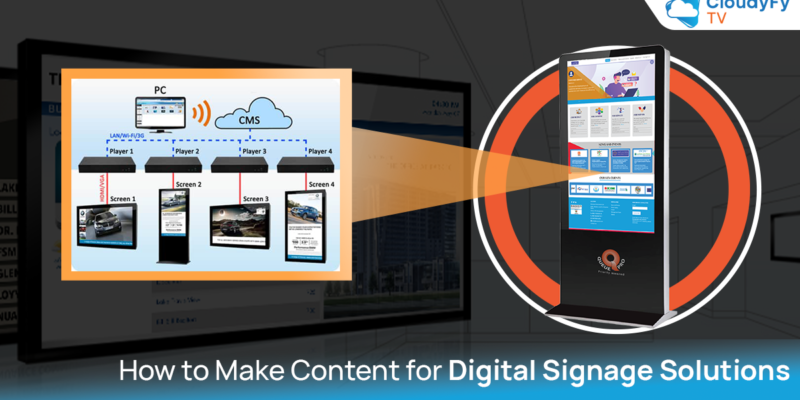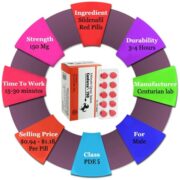
What is Digital Signage?
Digital signage solutions refers to the use of digital displays, such as LCD or LED screens, to broadcast content in various settings. It replaces traditional static signage with dynamic, customizable content that can include text, images, videos, and interactive elements. Digital signage is commonly used for advertising, information dissemination, wayfinding, and brand promotion in retail stores, corporate offices, transportation hubs, and other public spaces. It offers businesses a versatile and engaging communication platform to connect with their audience effectively.
How can businesses leverage digital signage benefits to enhance marketing and improve customer engagement?
Digital signage offers a multitude of benefits for businesses across various industries. One of the primary advantages is its ability to capture attention and engage viewers effectively. By displaying dynamic content in high-traffic areas, digital signage can attract customers’ attention and convey messages more efficiently than traditional static signage. Additionally, digital signage provides flexibility and scalability, allowing businesses to update content easily and tailor messages to specific audiences or occasions. Furthermore, digital signage solutions often include features such as scheduling capabilities and remote management, streamlining the content management process and reducing operational costs. Overall, the benefits of digital signage extend beyond mere advertising to encompass enhanced communication, increased brand awareness, and improved customer experiences.
Digital signage solutions have become an integral part of modern marketing and communication strategies. With the ability to display dynamic content in various environments, from retail stores to corporate offices, digital signage offers numerous benefits for businesses looking to engage their audience effectively. However, to harness the full potential of digital signage, it’s crucial to design content that is engaging, informative, and visually appealing. In this guide, we’ll explore best practices for creating compelling digital signage content that captures attention and drives results.
Understanding Your Audience
Before diving into content creation, it’s essential to understand your target audience. Digital signage benefits greatly from audience segmentation and personalized messaging. By defining your target demographic and analyzing their behavior and preferences, you can tailor your content to resonate with their interests and needs. Whether you’re targeting millennials in a trendy cafe or professionals in a corporate lobby, understanding your audience is key to creating relevant and impactful content.
Clear Objectives and Messaging
Every piece of digital signage content should have a clear objective and message. Whether it’s promoting a product, informing customers about upcoming events, or simply enhancing brand awareness, clarity is paramount. Digital signage solutions offer limited space and time to capture viewers’ attention, so concise and compelling messaging is essential. Ensure that your content aligns with your brand identity and conveys the intended message effectively.
Visual Design Principles
Visual design plays a crucial role in the effectiveness of digital signage content. Choose fonts, colors, and imagery that reflect your brand and enhance readability. Utilize visual hierarchy to guide viewers’ attention and prioritize important information. Incorporate motion and animation judiciously to add visual interest without overwhelming the viewer. With outdoor digital signage displays, consider factors such as brightness and contrast to ensure visibility in various lighting conditions.
Content Layout and Structure
The layout and structure of your digital signage content can significantly impact its effectiveness. Create layouts that are easy to read and navigate, utilizing grids and templates for consistency. Balance text and visuals to maintain viewer engagement, avoiding cluttered or overwhelming designs. Test different layouts to determine what resonates best with your audience and adjust accordingly.
Dynamic Content Strategies
One of the major benefits of digital signage is its ability to display dynamic content. Take advantage of this flexibility by incorporating dynamic elements such as real-time data, social media feeds, or interactive features. Custom digital signage software allows for seamless integration of dynamic content, enhancing engagement and relevance. Personalization techniques can further tailor content to individual viewers, increasing its impact.
Testing and Iteration
Effective digital signage content is the result of continuous testing and iteration. A/B testing allows you to compare different versions of content to determine what resonates best with your audience. Gather feedback from viewers and analyze performance metrics to identify areas for improvement. Iterate on your content based on these insights to continually optimize its effectiveness.
Compliance and Accessibility
In addition to engaging content, it’s essential to ensure compliance with accessibility standards and legal regulations. Make your content accessible to all viewers, including those with disabilities, by providing alternatives such as audio descriptions or text transcripts. Consider factors such as font size and color contrast to enhance readability for all viewers. Adhering to legal and regulatory requirements ensures that your digital signage content remains compliant and ethical.
Content Management and Scheduling
Efficient content management and scheduling are critical for maintaining a dynamic and relevant digital signage network. Implement a robust content management system (CMS) that allows for easy creation, distribution, and scheduling of content. Utilize remote management capabilities to update content across multiple displays from a central location. Schedule content to coincide with peak times or specific events, maximizing its impact and relevance.
Measuring Success
Measuring the success of your digital signage content is essential for refining your strategy and maximizing ROI. Identify key performance indicators (KPIs) such as viewer engagement, dwell time, and conversion rates. Track these metrics over time to evaluate the effectiveness of your content and make data-driven decisions. Analyze ROI to justify investment in digital signage solutions and identify areas for optimization.
Case Studies and Examples
To illustrate the effectiveness of well-designed digital signage content, consider showcasing case studies and examples of successful campaigns. Highlight strategies and tactics that led to positive outcomes, such as increased brand awareness or sales. Analyze the elements that contributed to success and draw insights that can be applied to future campaigns. Real-world examples can provide valuable inspiration and guidance for designing effective digital signage content.
Conclusion
In conclusion, designing effective digital signage content requires careful consideration of audience, objectives, and visual design principles. By understanding your audience and tailoring content to their interests and preferences, you can create compelling messaging that drives results. Utilize dynamic content strategies and leverage custom digital signage software to enhance engagement and relevance. Test and iterate on your content based on feedback and performance metrics to continually optimize its effectiveness. With the right approach, digital signage solutions can be a powerful tool for communicating with and engaging your target audience.











